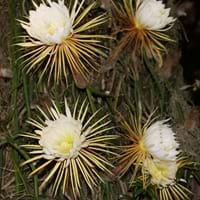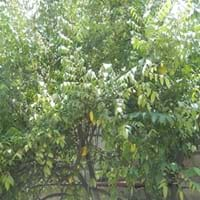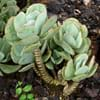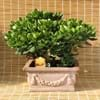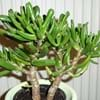Life Span
Perennial
Perennial
Type
Cactus, Flowering Plants
Fruit
Origin
South America, Argentina, Brazil
Southeastern Asia
Types
Not available
Not Available
Habitat
Dry Forest, limestone outcrops, Subtropical climates
Subtropical climates, Tropical regions
USDA Hardiness Zone
10-14
10-14
Sunset Zone
H2, 13, 16, 17, 21, 22, 23, 24
H1, H2, 22, 23, 24
Habit
Upright/Erect
Arching/Fountain-shaped
Flower Color
White, Light Green
Pink, Rose, Violet
Flower Color Modifier
Bicolor
Bicolor
Fruit Color
Orange, Pink, White, Yellow
Yellow, Orange, Light Yellow, Lemon yellow, Yellow green, Gold
Leaf Color in Spring
Not Available
Green
Leaf Color in Summer
Not Available
Green
Leaf Color in Fall
Not Available
Green
Leaf Color in Winter
Not Available
Light Green
Leaf Shape
Not Available
Oblovate
Plant Season
Spring, Summer, Fall, Winter
Spring, Summer, Fall
Sunlight
Full Sun
Full Sun, Partial Sun
Type of Soil
Loam, Sand
Loam, Sand
The pH of Soil
Acidic, Neutral, Alkaline
Acidic, Neutral
Soil Drainage
Well drained
Average
Bloom Time
Late Spring, Early Summer
Early Spring, Spring, Late Spring, Early Summer, Summer, Late Summer
Tolerances
Drought, Salt
Frost
Where to Plant?
Container, Ground
Ground
How to Plant?
Cuttings
Seedlings, Stem Planting
Plant Maintenance
Medium
Low
Watering Requirements
Average Water Needs, Distilled Water, Needs good drainage
Average Water Needs, Requires watering in the growing season
In Summer
Lots of watering
Lots of watering
In Spring
Moderate
Moderate
In Winter
Average Water
Average Water
Soil pH
Acidic, Neutral, Alkaline
Acidic, Neutral
Soil Type
Loam, Sand
Loam, Sand
Soil Drainage Capacity
Well drained
Average
Sun Exposure
Full Sun
Full Sun, Partial Sun
Pruning
Remove damaged leaves, Remove dead branches, Remove dead leaves
Prune in winter, Remove damaged leaves, Remove dead leaves
Fertilizers
All-Purpose Liquid Fertilizer
Fertilize every year
Pests and Diseases
Bacterial Stem Rot, Mealy bugs, Red spider mite, Scale
Red blotch
Plant Tolerance
Drought
Drought
Flower Petal Number
Semi-Double
Single
Foliage Texture
Bold
Medium
Foliage Sheen
Not Available
Glossy
Attracts
Birds, Spider Mites
Birds, Butterflies
Allergy
Avoid during Pregnancy, hallucinations
Kidney Stone
Aesthetic Uses
Showy Purposes
Not Used For Aesthetic Purpose
Beauty Benefits
Not Available
Not Available
Environmental Uses
Air purification
Air purification, Food for birds, Food for insects, Nesting sites for birds, Prevent Soil Erosion
Medicinal Uses
Antidiabetic, Rheumatism, Soothing and relieving pain
Anti-oxidant, Antioxidants, High blood pressure, Nutrients
Part of Plant Used
Flowers, Leaves
Fruits, Seeds
Other Uses
Traditional medicine, Used for its medicinal properties, Used in herbal medicines
Oil is used in perfume, soaps, creams, etc., Used As Food, Used for its medicinal properties
Used As Indoor Plant
Yes
No
Used As Outdoor Plant
Yes
Yes
Garden Design
Container, Edible, Hedges, Houseplant, Rock Garden, Wall, Tropical
Edible, Fruit / Fruit Tree, Tropical
Botanical Name
Selenicereus grandiflorus
AVERRHOA carambola
Common Name
Queen of the night, large-flowered cactus, sweet-scented cactus, vanilla cactus
Carambola, Starfruit
In Hindi
रात की रानी
carambola पेड़
In German
Königin der Nacht
Sternfrucht Baum
In French
Reine de la nuit
arbre carambole
In Spanish
Reina de la noche
árbol de carambola
In Greek
Βασίλισσα της νύχτας
carambola δέντρο
In Portuguese
Rainha da noite
árvore de carambola
In Polish
Królowa nocy
karambola drzewo
In Latin
Domina noctis
carambola ligno
Phylum
Magnoliophyta
Tracheophyta
Class
Magnoliopsida
Magnoliopsida
Order
Caryophyllales
Oxalidales
Family
Cactaceae
Oxalidaceae
Genus
Selenicereus
Averrhoa
Clade
Angiosperms, Core eudicots, Eudicots
Angiosperms, Eudicots, Rosids
Tribe
Hylocereeae
Not Available
Subfamily
Cactoideae
Not Available
Season and Care of Queen of the Night and Carambola
Season and care of Queen of the Night and Carambola is important to know. While considering everything about Queen of the Night and Carambola Care, growing season is an essential factor. Queen of the Night season is Spring, Summer, Fall and Winter and Carambola season is Spring, Summer, Fall and Winter. The type of soil for Queen of the Night is Loam, Sand and for Carambola is Loam, Sand while the PH of soil for Queen of the Night is Acidic, Neutral, Alkaline and for Carambola is Acidic, Neutral.
Queen of the Night and Carambola Physical Information
Queen of the Night and Carambola physical information is very important for comparison. Queen of the Night height is 300.00 cm and width 90.00 cm whereas Carambola height is 610.00 cm and width 610.00 cm. The color specification of Queen of the Night and Carambola are as follows:
Queen of the Night flower color: White and Light Green
Queen of the Night leaf color: Not Available
Carambola flower color: Pink, Rose and Violet
- Carambola leaf color: Green
Care of Queen of the Night and Carambola
Care of Queen of the Night and Carambola include pruning, fertilizers, watering etc. Queen of the Night pruning is done Remove damaged leaves, Remove dead branches and Remove dead leaves and Carambola pruning is done Prune in winter, Remove damaged leaves and Remove dead leaves. In summer Queen of the Night needs Lots of watering and in winter, it needs Average Water. Whereas, in summer Carambola needs Lots of watering and in winter, it needs Average Water.
